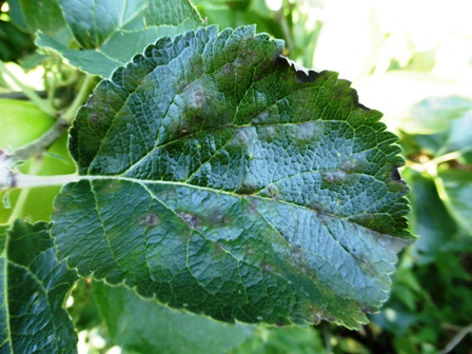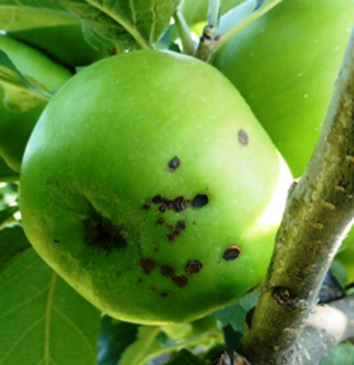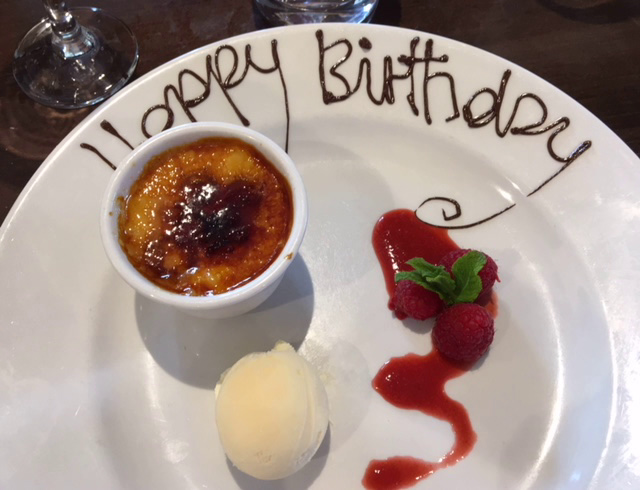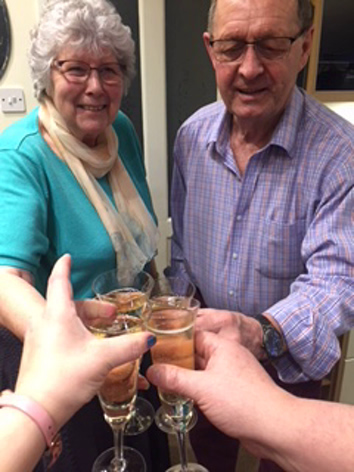

Easter is early this year and coincides with a busy week for The English Apple Man's Family.........
Its been an eventful week....last Sunday we took my brother and sister-in-law to La Bella Vista Restaurant on the seafront at Hastings in East Sussex for an evening of 'fine food' and opera.........
The evening was a 'double treat' - a celebration of my brother's birthday at the beginning of March and The English Apple Man's birthday on Thursday 29th March...........
A quite wonderful evening; fabulous food and operatic entertainment from Mezzo-Soprano Thomasin Trezise who is Royal College of Music trained and a regular performer at Glyndebourne........
To view 2018 programme; click on GLYNDEBOURNE 2018
Below: Apple Fruit Bud burst
Monday here in East Sussex was a fine day with a feeling of Spring in the air........by Tuesday the temerature had dropped and the rain made it a miserable day; looking at the weather forecast on my iPhone, every day for the next 10 days is dominated by rain..........
At this time of the year as the fruit bud swells and starts to break, the young 'emerging' tissue (leaves) are very susceptible to scab spores....the period where the overwintering scab on the orchard floor releases its spores is known as 'a mills period' - a combination of wet conditions and temperature; the longer the wet period, the shorter the temperature required for 'scab spore release' -
The weather from bud burst until blossom time plays so much importance in the control of scab infection. Prolonged wet weather and/or warm & wet periods determine the risk; long periods of wet and shorter wet/warm periods trigger the sporulation of scab spores from overwintering scab lesions 'hiding' on debris on the orchard floor or on 'old scab' infections present on the trees.
The wetness/temperature gradient influences the incidence and level of Scab Sporulation - with the weather forecast over the next 10 days suggesting rain on every day, the probability of Scab Sporulation and Infection is high and matched by the difficulty in applying Scab sprays; either 'protective' or 'eradicant'
Protective sprays are 'just what they say' - protecting the leaf tissue at time of application; however any emergence of new leaf tissue after the point of application will be at risk of scab infection during a 'mills period'
Commercial growers benefit from weather forecasting software which analyses the weather and applies risk factors to predict the risk of scab infection. But on a commercial fruit farm, protective sprays will take many hours to apply and the application needs a period of dry weather...........
Today we have sophisticated machinery like 3 row sprayers capable of covering large areas of orchards quickly....
Below: Three row sprayer at work in an orchard in East Kent
Below: Data from Washington State University
Approximate Wetting Period Required for Primary Apple Scab Infection at Different Air Temperatures and Time Required for Development of Conidia
Degree of Infection
Followed by the temperature - level of rainfall/light/moderate/heavy and number of days before a scab infection is identifiable...........
Average temperature (°F)(33-36)(0-2c) Light (hours) 48 - Moderate (hours) 72 - Heavy (hours) 96 - Lesion Appearance (days) ?
Average temperature (°F)(42)(5.5c) Light (hours) 23 - Moderate (hours) 33 - Heavy (hours)50 - Lesion Appearance (days) 17
Average temperature (°F)(50)(10c) Light (hours) 14 - Moderate (hours) 19 - Heavy (hours) 29 - Lesion Appearance (days) 16
Average temperature (°F)(63-75)(17.24c) Light (hours) 9 - Moderate (hours) 12 - Heavy (hours) 18 - Lesion Appearance (days) 9
Hours of wetness from the beginning of rain (data of W.D. Mills as modified by A.L. Jones). If sporulating lesions are already present, wetting periods required to produce secondary infections are approximately 3 hours less than those listed in the table for primary infection.
Number of days required for lesions to appear after infection has been initiated. No further wetting is required. Additional days may be required if conditions are unfavourable for lesion development (prolonged periods above 80 °F or very dry weather).
Below: left; leaf scab and right; active scab on Bramley fruitlets....


The English Apple Man acknowledges Washington State University
 After my birthday on Thursday (29th March) when we enjoyed lunch with our daughter, son-in-law and my Mother at Webbes Rock-A-Nore in The Old Town in Hastings, my wife and I celebrated 55 years of Marriage on Good Friday (30th March)
After my birthday on Thursday (29th March) when we enjoyed lunch with our daughter, son-in-law and my Mother at Webbes Rock-A-Nore in The Old Town in Hastings, my wife and I celebrated 55 years of Marriage on Good Friday (30th March)
Enjoying the company of our daughter and our son-in-law, we celebrated our 'Emerald Anniversary' with a glass of Champagne........
Below: The English Apple Man and Mrs EAM celebrate 55 years of Marriage...


That's it for this week.........the next Journal is on Friday 6th April.......
Take care
The English Apple Man